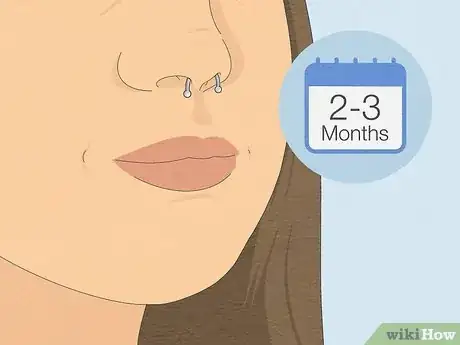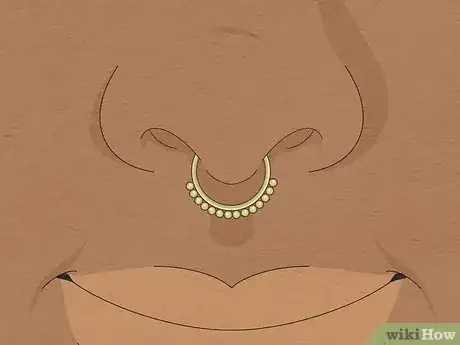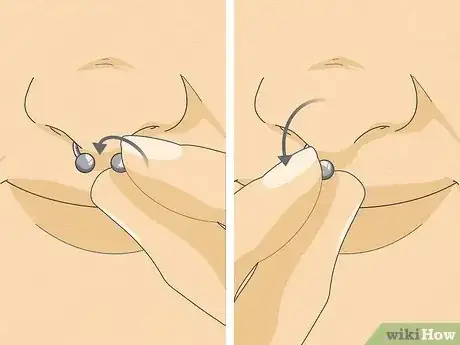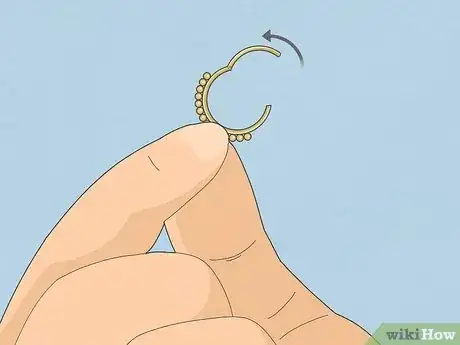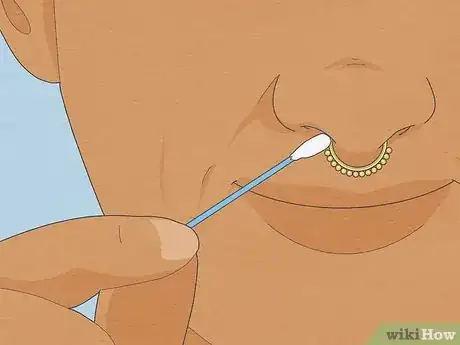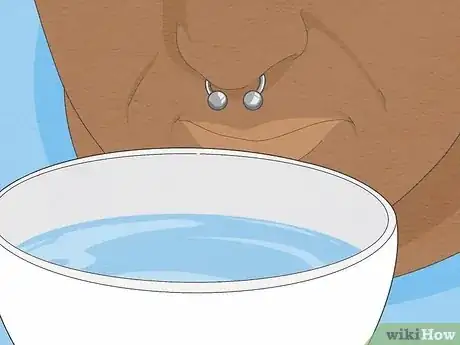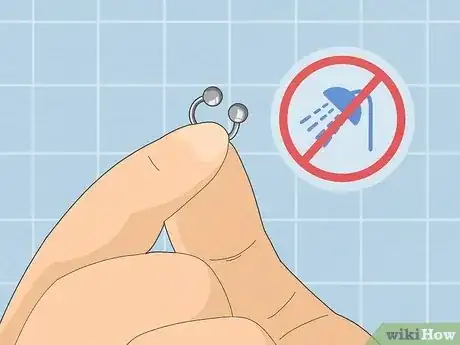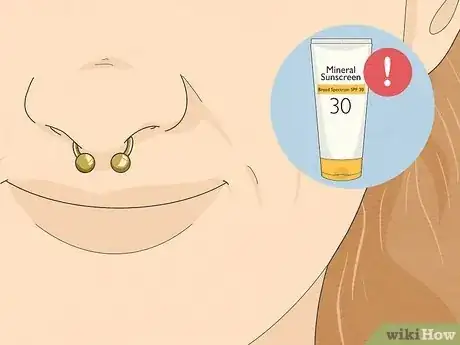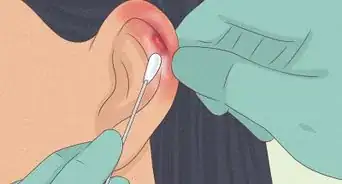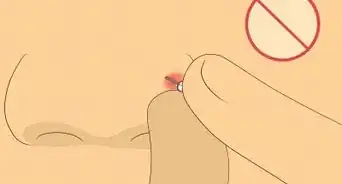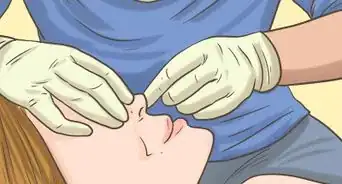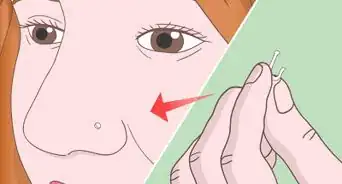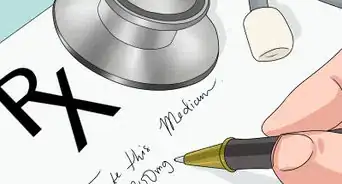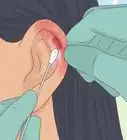This article was written by Karissa Sanford and by wikiHow staff writer, Dan Hickey. Karissa Sanford is the Co-owner of Make Me Holey Body Piercing, a piercing studio based in the San Francisco Bay Area that specializes in safe and friendly body piercing. Karissa has over 10 years of piercing experience and is a member of the Association of Professional Piercers (APP).
There are 13 references cited in this article, which can be found at the bottom of the page.
This article has been viewed 7,268 times.
Getting a septum piercing is an exciting and trendy way to try out a bold, new look, but after a few weeks, you might be wanting to try out some new metal. Are you free to switch things up whenever you want? Like all piercings, septum piercings are wounds that need time to heal, and changing up your jewelry too fast can slow down your healing time. In this article, we’ll tell you when to change your septum piercing for the first time, plus walk you through how to make the swap and care for your piercing to prevent infection. You’ll be trying out daring new septum jewelry before you know it!
This article is based on an interview with our body piercing specialist, Karissa Sanford, co-owner of Make Me Holey Body Piercing. Check out the full interview here.
Things You Should Know
- Wait until your septum is fully healed to change the jewelry. This usually takes 2-3 months, but can take 6-8 months or longer for some people.
- Unscrew the ball from the horseshoe (or unclasp a hinged segment clicker), then carefully rotate the jewelry out through the piercing hole to remove it.
- To put new jewelry in, unclasp or unscrew the new metal and guide the post through the opening. Clasp it or screw on the ball to secure it.
- Clean the new jewelry twice a day with saline for a week. Avoid swimming or getting makeup on it to prevent irritation or infection.
Steps
Warnings
- Contact your piercer or a doctor if you notice infection symptoms like redness or tenderness, swelling, prolonged bleeding, pus or other fluid discharge, or a change in skin color around the piercing.[17]⧼thumbs_response⧽
- If you notice infection symptoms and your piercing is through your septum cartilage rather than the flesh underneath, contact a doctor right away. It’s harder to treat infections in cartilage than in other tissue.⧼thumbs_response⧽
References
- ↑ https://authoritytattoo.com/septum-piercing-healing-times/
- ↑ https://authoritytattoo.com/septum-piercing/
- ↑ https://www.healthychildren.org/English/ages-stages/teen/Pages/body-piercings.aspx
- ↑ https://hellogiggles.com/everything-you-need-to-know-about-septum-piercing/
- ↑ https://uhs.berkeley.edu/sites/default/files/piercingcare.pdf
- ↑ https://authoritytattoo.com/how-to-clean-body-piercing-jewelry/
- ↑ https://youtu.be/gik6YqjgC0k?t=300
- ↑ https://youtu.be/gik6YqjgC0k?t=103
- ↑ https://youtu.be/TepO2JMOpSQ?t=161
- ↑ https://youtu.be/TepO2JMOpSQ?t=260
- ↑ https://uhs.berkeley.edu/health-topics/body-piercings
- ↑ https://uhs.berkeley.edu/health-topics/body-piercings
- ↑ https://uhs.berkeley.edu/health-topics/body-piercings
- ↑ https://www.nhs.uk/common-health-questions/lifestyle/can-i-go-swimming-after-a-piercing/
- ↑ https://authoritytattoo.com/septum-piercing-healing-times/
- ↑ https://www.arcadiabodypiercing.com/fresh-piercing-aftercare
- ↑ https://www.healthychildren.org/English/ages-stages/teen/Pages/body-piercings.aspx
